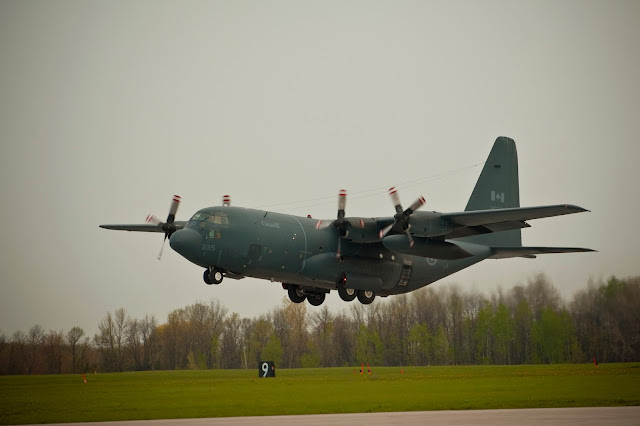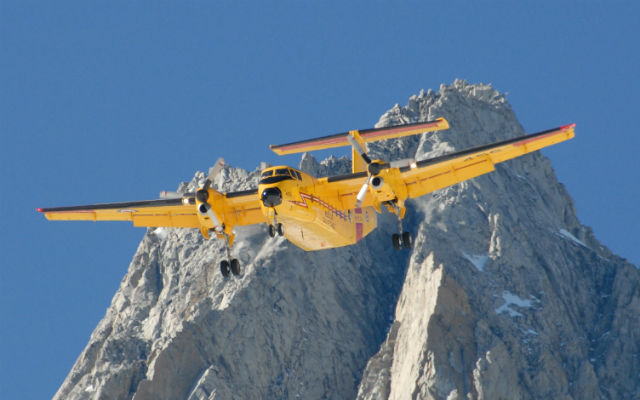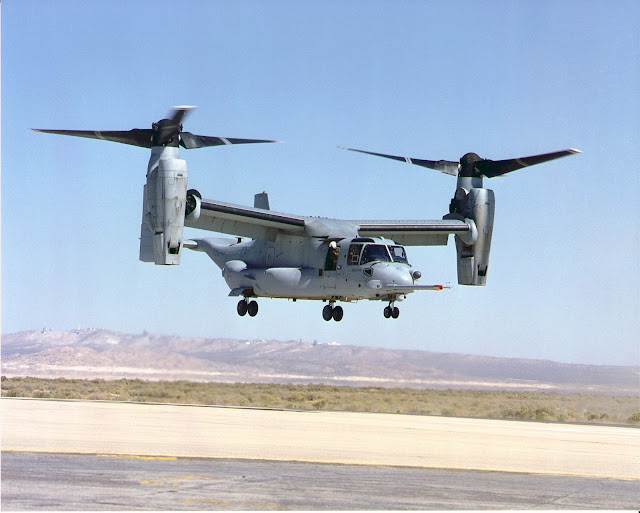 |
| CC-115 Buffalo |
If an individual ever had doubts about just how bewildering Canada's military procurement methods are, look no further than the efforts to replace its fixed-wing search and rescue (FWSAR) fleet.
Announced in 2004, the FWSAR replacement project has seen countless delays. Even more frustrating is that none of these delays are caused by technical issues. Instead, the FWSAR has been a victim of politics and bureaucracy gumming up what should have been a straight-forward project.
The need is there to replace Canada's aging CC-115 Buffalo. The 60s era airframe has not been built since 1986. Parts are increasingly difficult to procure and maintenance is a challenge.
Cost is not an issue. Compared to the $9 billion CF-18 replacement and the $38 billion National Shipbuilding Procurement Strategy (NSPS), the $3.1 billion (service contract included) FWSAR project is unlikely to raise any objections.
Politically, moving forward with the FWSAR would seem like a non-issue. Canadian recognize the need for an effective search-and-rescue force, what with our vast coastlines and northern wilderness.
Despite the need, the acceptable cost, and political will to find a new FWSAR, the project has dragged on for over a decade. So why the hold-up?
Bureaucracy and politics.
 |
| CC-130H |
Things may have gone easier if the DND was merely replacing the CC-115 Buffalo. Instead the FWSAR project is tasked with replacing TWO different aircraft. On the east coast, the RCAF conducts FWSAR operations using the CC-130H Hercules. These Hercs are also tasked with strategic transport when needed.
Needless to say, the Buff and the Herc have different capabilities. The Buffalo is an exemplary STOL aircraft, and heralded for its ability to fly in amongst the Rocky Mountains. The Hercules is much larger, offers a pressurized cabin, has a farther range, and flies much faster. While it may not be able to put the "Mark One Eyeball" as close to the ground as a Buffalo, this deficiency can easily be made up for using modern imaging devices, like FLIR and ground mapping radar.
If the DND merely ordered a few short CC-130Js for the FWSAR task when it ordered its current batch of CC-130J "Super Hercs", it would have likely raised few eyebrows. After all, we would simply be upgrading our current fleet of FWSAR Hercs as well as replacing the CC-115 Buffalo.
Instead, the newly elected Conservative government decided to sole-source the Alenia C-27J Spartan.
 |
| C-27J Spartan |
The reasoning is sound. The C-27J utilizes the same Rolls-Royce AE2100 turboprop engines as the C-130J, as well as other systems. The C-27J is often referred to as the "Baby Herc", and for good reason.
The Defence Minister at the time, Peter MacKay, was roundly criticized for the decision to sole-source the C-27J. Even if the Spartan was an acceptable choice, that was no excuse to disqualify competing bids. Other aircraft, such as the EADS-CASA (now Airbus Military) C-295, Lockheed Martin C-130J, and even the Bombardier Q400 and Boing V-22 Osprey were worth consideration at least. Not only that, but sole-sourcing the Italian built C-27J offered little economic benefit to the Canadian aerospace industry.
When the DND went back to the drawing board, it came back with a Statement of Operational Requirements (SOR). CASA-EADS then accused the DND of writing the SOR with the C-27J specifically in mind. One of the rumored "requirements" was the ability to transport a spare propellor, a dubious need for a aircraft focused on search-and-rescue.
Back to the drawing board again.
 |
| Airbus Military C-295 |
The good news in all this is that the most recent statement of requirements allow some flexibility in the competitors' bids. Manufacturers have been given the option to suggest how many aircraft and where those aircraft should be based. This extra flexibility allows for the slower (but cheaper) C-295 to meet the requirements by having more aircraft based at more airbases.
This new-found flexibility may prove to be a boon if it carries over to other procurements. The CF-18 replacement project, for example, has been criticized for attempting to replace Canada's current fleet of 79 Hornets with only 65 fighters. Any manufacturer able to deliver more airframes for the same cost should certainly be given extra consideration.
 |
| Embraer KC-390 |
Another silver lining to the cloud surrounding Canada's FWSAR replacement is the inclusion of a contender that did not even exist when the project was first launched.
Brazilian Embraer has proposed its new KC-390 to compete with the C-27J and C-295. A definite outlier in the program, the KC-390 uses turbofans instead of turboprops. It also happens to the largest entry, much larger than the C-295 and C-27J. The KC-390 is even bigger than the (standard fuselage) C-130.
 |
| It's big. |
That extra size gives the KC-390 some advantages. It flies faster, further, and higher than the others while offering a substantially higher payload (over double!). The KC-390 has also been designed with the aerial tanker role in mind, capable of refueling fast fighters or slow helicopters.
All that extra size and versatility may be overkill for the FWSAR bid, as the RCAF already has sufficient transports and tankers (although the CC-150 Polaris is getting on in years...).
 |
| V-22 Osprey |
The FWSAR project is interesting not just for who bid, but for who did not.
The Bell-Boeing V-22 Osprey was briefly considered, but was ultimately a no-show. With its troubled development is now mostly behind it, Bell-Boeing are now after sales outside the USA. Unfortunately, the Osprey is still quite pricy. It is also slower and has less range than the others.
The Bombardier Q400 (aka the Dash 8) was proposed, but lacks the rear loading ramp required by the RCAF. Modifying the Q400 with a ramp would likely be far too risky an undertaking.
Viking Air Limited proposed "new build" Buffalos with updated engines and avionics. Known as the DHC-5NG. Like the Q400, this would have been an attractive option for economic benefits, but entails a fair amount of risk and Canada would once again be stuck with an "orphan" aircraft with no international support (i.e. CH-148 Cyclone).
The biggest news was Lockheed Martin declining to bid on Canada's FWSAR.
Canada has long been a user of the C-130, both for transport and search-and-rescue. As stated before, upgrading from the C-130H to the C-130J would have been a painless endeavor. If Lockheed Martin did decide to bid, it would have a huge advantage of pre-existing infrastructure (simulators, training, supply lines, etc).
So why skip out?
Some say that Lockheed Martin stepped out of the FWSAR bid as "punishment" for Canada abandoning the F-35 program. This is highly suspect, as Canada has yet to officially back out. Not only that, but Lockheed Martin seemed ambivalent back in May of 2015, before the current Liberal government was elected or even before they made the campaign promise to cancel the JSF. Not only that, but "punishing" a potential client for not buying your product would be a disastrous business decision. Doing so would scare off a lot of potential buyers in the future.
A more likely explanation is that Lockheed Martin simply did not consider Canada's FWSAR worth the effort.
Even with all the Herc's advantages, it is still an expensive aircraft. At about $100 million per unit cost and a (USAF) $14,000 cost per flight hour, the Herc may not have been economically viable. The fact that Lockheed Martin's waning interest occurred roughly at the same time as Embraer entered the scene seems to support this, as the KC-390 was designed specifically to undercut the C-130's price.
Given the demand for C-130Js worldwide, one wonders if Lockheed Martin could have even fulfilled an order in a timely fashion.
 |
| Big shoes to fill. |
Of the remaining three, which aircraft is best suited to fill the FWSAR role?
The Buff and the Herc are two extremely capable aircraft, and finding an aircraft to replace both is daunting to say the least. All three competitors offer distinct advantages over the others.
C-27 SPARTAN
- Still the odds on favorite.
- Commonality with the Super Herc.
- Better range and speed than the C-295
- Seemingly hits the "sweet spot" of size and capabilities.
C-295
- Cheapest of the three.
- May be stationed in more bases with higher numbers.
- Lightest of the three.
KC-390
- Most versatile.
- Fastest, longest range, heaviest payload.
- May be considered "overkill".
- Early in development with plenty of questions regarding price and reliability.
Obviously, the dark horse here is the Embraer KC-390. No details have been released regarding its bid, but considering this could be seen as a major "conquest" sale against the C-130, expect it to be aggressive.
This will likely be the first military purchase of the new Liberal government and certainly "one to watch". Given Canada's current financial straits combined with our military's desperate need for new equipment, the FWSAR selection is likely to set the tone for much bigger projects on the horizon.
Let us hope those bigger projects are forthcoming soon.

























